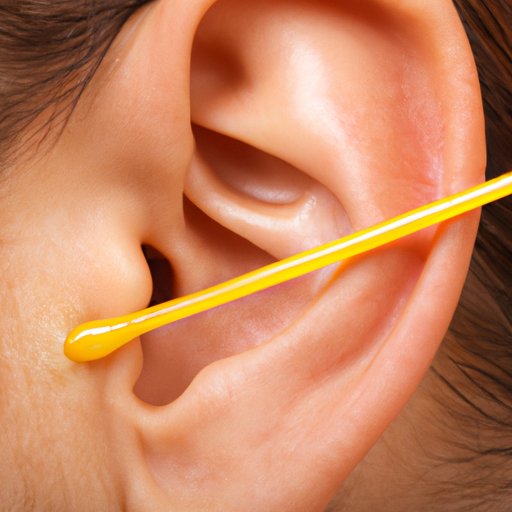
Introduction
Ear wax is a natural substance that we all have, but sometimes it can become impacted and cause discomfort or hearing loss. While it can be tempting to try to remove it yourself, improper at-home removal can lead to further complications and damage. This article will provide tips and methods for safe ear wax removal, along with information about common myths and precautions.
Why ear wax is important and how it naturally gets removed
Ear wax, also known as cerumen, is a sticky substance produced by the ear canal glands that helps to protect and lubricate the ear. It also helps to keep debris and bacteria from entering the ear canal. Usually, ear wax naturally moves out of the ear and falls out on its own or is washed away while showering.
Symptoms of impacted ear wax and why it can be a problem
When ear wax becomes impacted, it can lead to a range of symptoms such as earache, ear fullness, tinnitus, vertigo, and hearing loss. Impacted ear wax can cause the eardrum to become irritated or even rupture, leading to infection or permanent hearing damage. It may also interfere with hearing, making it difficult to communicate with others effectively.
Methods for softening ear wax
Before attempting to remove ear wax, it is important to soften it first to avoid further irritation or damage. Olive oil is a safe and effective way to soften ear wax, and it can be found in any grocery store. Over-the-counter ear drops are also an option, but it is important to follow the instructions carefully and not exceed the recommended dosage. Other home remedies such as hydrogen peroxide, tea tree oil, and saline solution should be avoided as they can be too harsh for the ear canal.
Safely removing ear wax
There are two primary methods for safely removing ear wax: ear irrigation and ear curettage. Ear irrigation involves flushing the ear canal with warm water using a syringe or bulb, while ear curettage involves using a small scoop or loop to physically remove the wax. It is important to note that these methods should only be performed by a professional or under the guidance of a medical professional. Attempting to perform these methods on your own can lead to further complications or damage.
Precautions for at-home wax removal
While at-home ear wax removal methods can be effective and safe, there are some precautions that should be taken. It is important to avoid using sharp objects such as cotton swabs, bobby pins, or toothpicks to remove the wax, as this can push the wax further into the ear canal or cause damage to the eardrum. Similarly, avoid using ear candles, which are not only ineffective but also pose a significant risk of burns and injuries.
Common myths about ear wax removal
There are many myths and misconceptions surrounding ear wax removal. One common myth is that ear wax is a sign of poor hygiene, when in reality, it is a natural and necessary substance that helps to protect the ear. Another myth is that the more ear wax that is removed, the better, when in fact, removing too much ear wax can lead to dryness, irritation, and further complications. Finally, some people believe that ear candles are a safe and effective way to remove ear wax when, in fact, they pose significant risks and have not been proven to be beneficial.
Conclusion
Ear wax removal can be a tricky business, but with the right precautions and methods, it can be done safely and effectively. If you are experiencing symptoms of impacted ear wax or are unsure about at-home removal methods, it is recommended to seek the advice of a medical professional. Remember to avoid common myths and misconceptions about ear wax and to handle your ears with care to avoid further damage. With a little patience and knowledge, you can help keep your ears healthy and happy.





